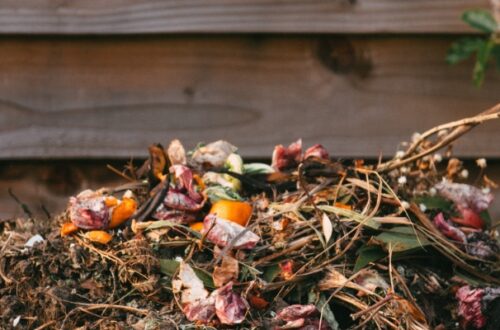
Make Your Laundry Routine Green
We all know the laundry routine: add dirty washing to the machine, add detergent, press a button, and voilà—clean clothes emerge.
But have you ever considered the environmental toll of of our constant laundry cycles? Our laundry habits have a bigger impact on the planet than we realise, from water usage and energy consumption to the release of micro-plastics and chemicals into the environment.
The good news is, with a few simple tweaks, we can make our laundry routine much greener without compromising cleanliness. Let’s explore how to wash in a way that’s kinder to the planet.
The Environmental Impact of Washing Clothes
It’s easy to overlook how our daily activities, like doing laundry, affect the planet. But the truth is, washing clothes has a significant environmental impact. The average washing machine uses around 50 litres of water per cycle. Multiply that by the number of washes a household does each week, and the water consumption adds up quickly. Energy usage is another concern; heating water accounts for around 90% of the energy used in a typical wash, contributing to greenhouse gas emissions.
Then there’s the issue of micro-plastics—tiny fibres shed from synthetic fabrics such as polyester and nylon. Each wash can release thousands of these particles into the wastewater system, which eventually makes its way to rivers and oceans, harming aquatic life. Plus, many mainstream detergents contain harsh chemicals that end up in waterways, disrupting ecosystems and affecting both wildlife and human health. With these environmental costs in mind, it’s clear we need to rethink our laundry habits.
How to Make the Washing Process More Green
Luckily, there are several easy ways to make your laundry routine more eco-friendly. These small changes can help reduce water and energy consumption, decrease chemical use, and minimise micro plastic pollution.
Line Dry or Air Dry Instead of Tumble Dry
One of the simplest ways to make your laundry routine greener is to line dry or air dry clothes instead of using a tumble dryer. Tumble dryers are notorious energy hogs, consuming large amounts of electricity to dry clothes.
In fact, using a tumble dryer just once can produce as much as 2.5 kg of carbon dioxide. Opting to line dry not only saves energy but also extends the life of your clothes. The high heat of a tumble dryer can cause fabrics to wear out more quickly, leading to more frequent replacements. We’re just getting into the wet weather of autumn and winter so when it’s not practical to dry things on the line, consider using a clothes airer indoors or drying clothes on a radiator.
Wash Clothes Only When Necessary
We’ve all been guilty of tossing clothes into the wash basket after just one wear. But most garments don’t need washing after every use. For instance, jeans can be worn several times before they actually need a wash.
Over-washing not only wastes water and energy but also wears out fabrics faster, meaning you’ll end up buying replacements sooner. Get into the habit of assessing whether an item really needs to be cleaned. If it isn’t visibly dirty or doesn’t have an odour, give it another wear. When you do wash, use the lowest temperature setting possible to save on energy and help your clothes last longer.
Skip the Fabric Conditioner
Fabric conditioner may make clothes feel softer, but it comes at a cost. The chemicals used in these products often coat fabrics with a thin layer of waxy residue, which can reduce the breathability of the material. This residue can also build up in washing machines and drains, eventually making its way into the environment. Over time, using fabric conditioner may even damage certain fabrics, causing them to lose their natural softness and absorbency. Instead of reaching for a bottle of conditioner, try natural alternatives like white vinegar. It’s gentle, eco-friendly, and helps keep clothes feeling soft without the environmental impact and extends the life of your washing machine.
Choose an Eco-Friendly Detergent
Traditional liquid detergents often come in bulky plastic bottles and contain harsh chemicals. By switching to a more sustainable option, such as eco-friendly washing powder sheets or concentrated detergent, you can significantly reduce the waste produced by your laundry routine. Washing powder sheets are particularly great because they’re plastic-free, biodegradable, and often skip harmful chemicals like phosphates or artificial fragrances.
Catch Microplastics Before They Leave the Machine
When washing synthetic fabrics, tiny plastic fibres break off and can end up in waterways, contributing to the micro-plastics pollution problem. Fortunately, there are ways to catch these micro-plastics before they leave the washing machine. Specially designed washing bags or filters can trap the microfibres released during the wash cycle, preventing them from entering the wastewater system. The captured fibres can then be disposed of responsibly in the bin, rather than down the drain. Another option is to reduce the number of synthetic clothes you buy in the first place, choosing natural materials like organic cotton or linen whenever possible.
Extra Tips for a Greener Laundry Routine
While the suggestions above cover the basics, there are other ways to make your laundry even more eco-friendly.
One approach is to reduce the amount of detergent used per wash. Often, we use more detergent than necessary, which isn’t only wasteful but can also leave residue on clothes and inside the machine. Follow the instructions on the detergent packaging and consider using half the recommended amount for lightly soiled items. Additionally, always wash full loads to make the most of the water and energy used, and avoid half-load cycles if possible.
When it comes to choosing a washing machine, look for models that are energy-efficient and have an eco-mode. These features allow you to wash clothes using less water and lower temperatures, without compromising on cleanliness. An energy-efficient machine may also have settings that help reduce wear and tear on fabrics, meaning your clothes last longer.
Finally, embrace cold-water washing. Many modern detergents are designed to work effectively at lower temperatures, meaning there’s no need to crank up the heat. Washing at 30°C instead of 60°C can reduce energy usage by as much as 40%, making it a simple yet impactful change.
With these steps, you can enjoy fresh clothes while also keeping your environmental footprint in check. Who knew doing the laundry could be part of your contribution to saving the planet?





